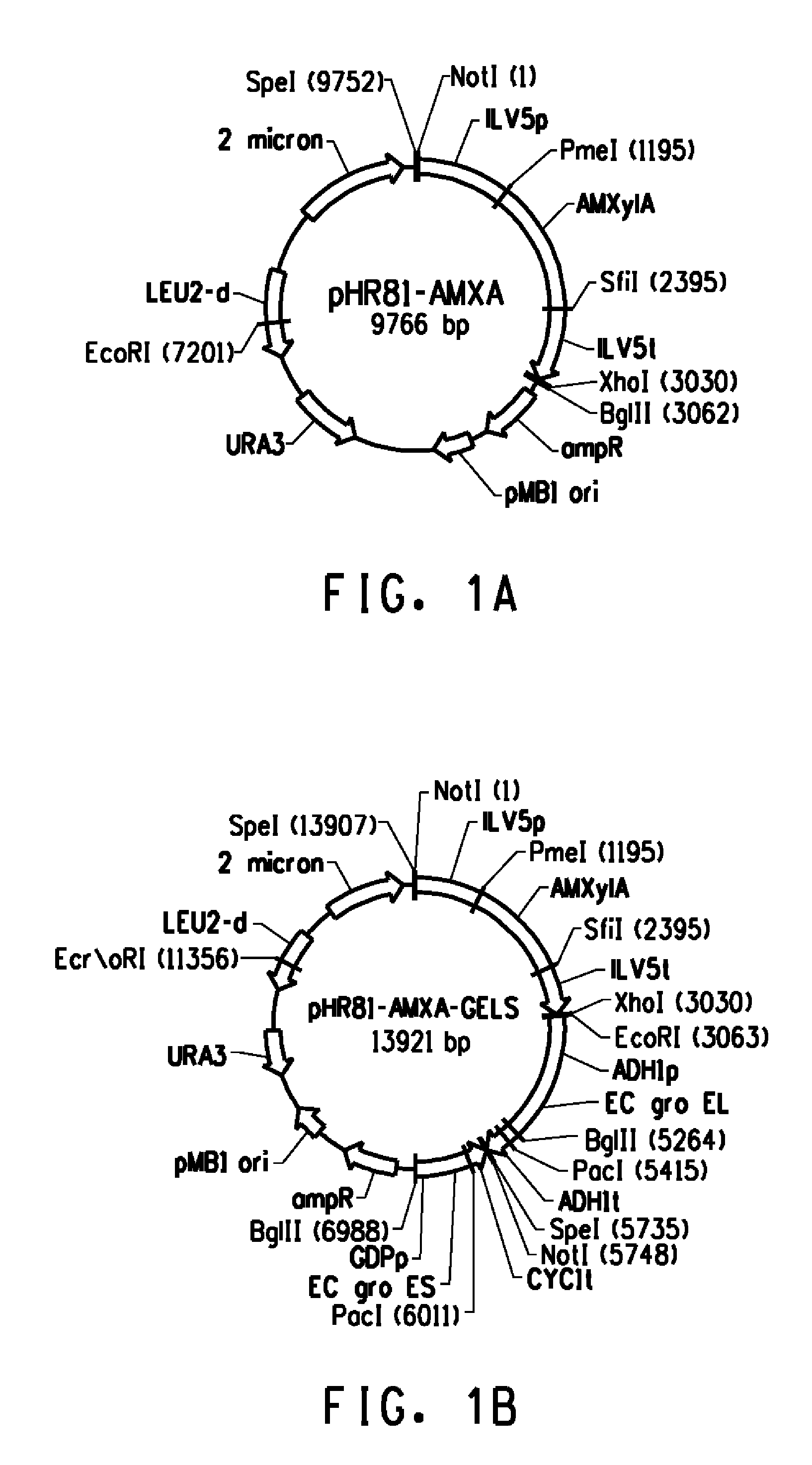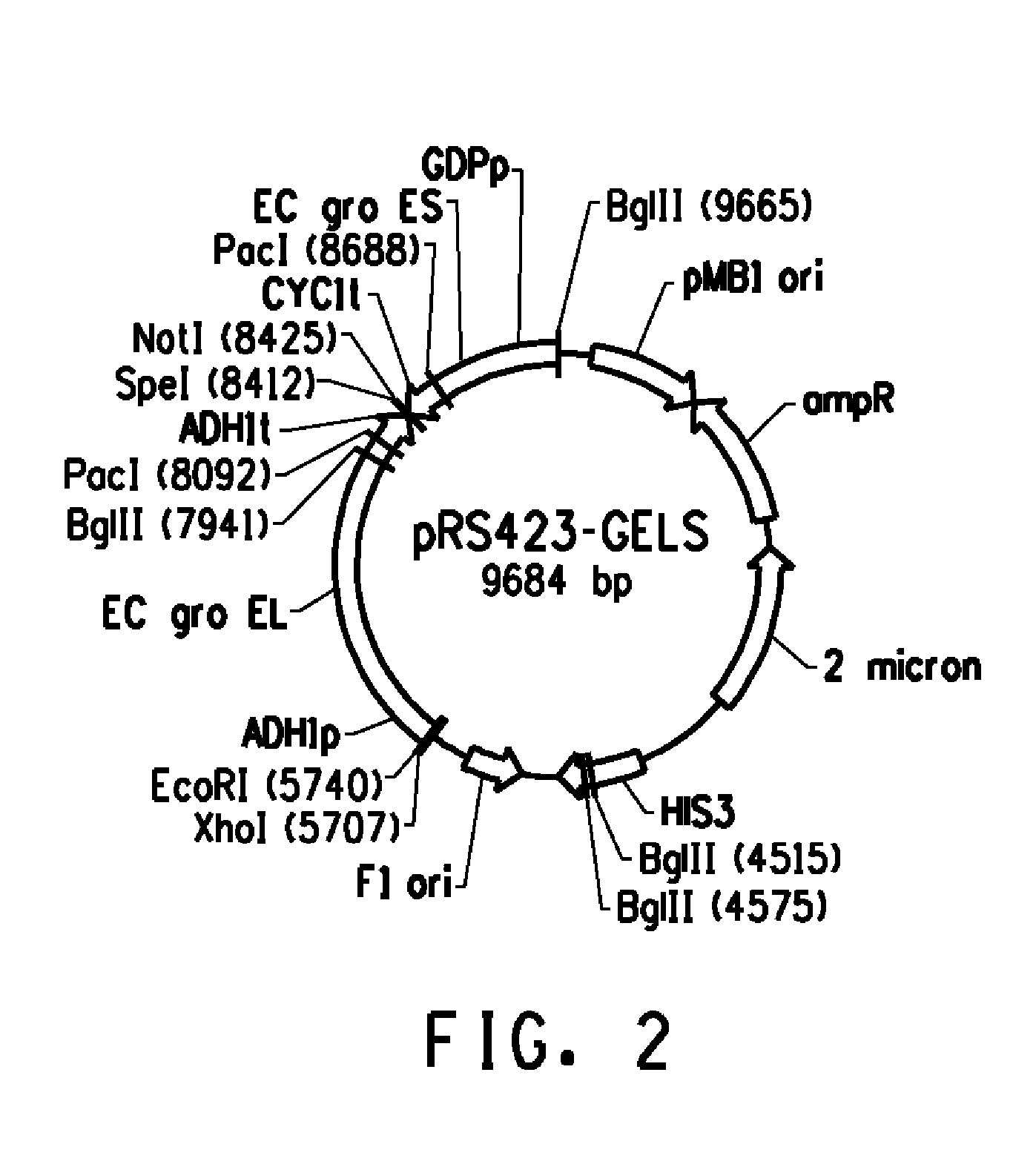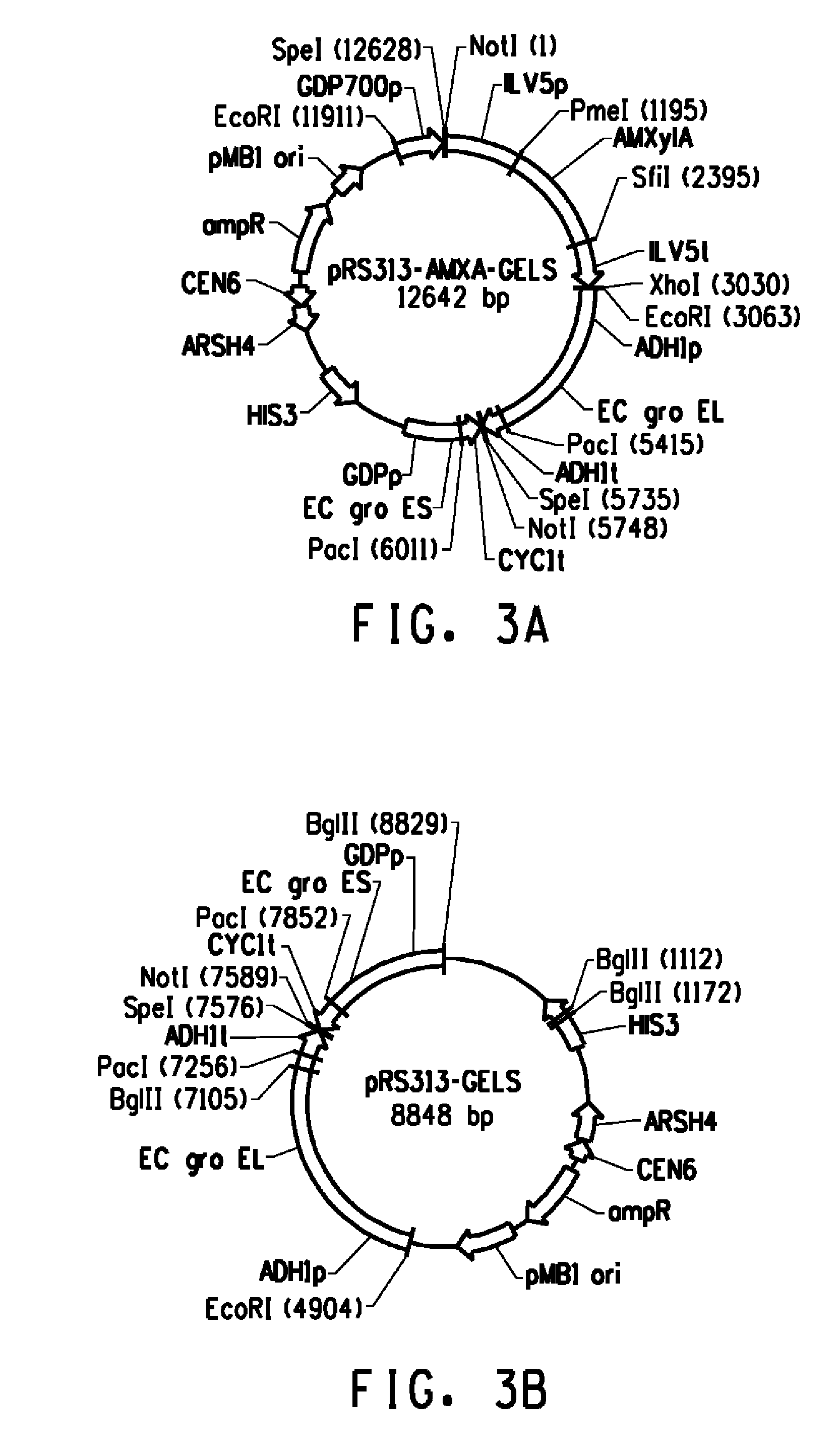Expression of xylose isomerase activity in yeast
a technology of xylose isomerase and xylose isomerase, which is applied in the field of gene engineering of yeast, can solve the problems of limited success in expressing heterologous xylose isomerase enzymes that are active in yeast, and the lack of significant catalytic and achieves the effect of higher specific activity of xylose isomerase enzymes
- Summary
- Abstract
- Description
- Claims
- Application Information
AI Technical Summary
Benefits of technology
Problems solved by technology
Method used
Image
Examples
example 1
AMxyIA, ECgroES, and ECgroEL Expression Cassettes Constructed in Yeast Shuttle Vectors
[0120]Vectors were prepared for yeast engineering to study whether the Actinoplanes missouriensis xylose isomerase (AMXI) can be expressed and function in Saccharomyces cerevisiae. AMXI is a group I xylose isomerase, which was found to provide higher activity than other prokaryotic xylose isomerases when expressed in Zymomonas mobilis, as described in US 20110318801. In addition, to study effects of co-expressing the Escherichia coli GroES and GroEL chaperonin coding sequences, ECgroEL and ECgroES, yeast shuttle vectors were constructed for their expression.
[0121]The AMxyIA, ECgroES, and ECgroEL genes encode a 394-aa AMXI protein (SEQ ID NO:29), a 548-aa ECGroEL protein (SEQ ID NO:1), and a 97-aa ECGroES protein (SEQ ID NO:15), respectively. The gene sequences are available in Gene Bank with accession numbers of X16042, NC313150, and NC313151, respectively. Coding sequences for the proteins of SEQ ...
example 2
Characterization of A. missourinesis Xylose Isomerase Expression in Yeast Together with E. coli GroES and GroEL Expression
[0127]S. cerevisiae strain BY4741 (ATCC 4040002) is a common laboratory strain with a genotype of [MATa his3Δ1 leu2Δ0 met15Δ0 ura3Δ0]. In order to transform it with the constructed yeast shuttle vectors, competent cells of BY4741 were prepared using the Frozen-EZ Yeast Transformation II Kit from Zymo Research (Orange, Calif.). Briefly, 1 mL of overnight grown BY4741 strain was diluted 10 fold using fresh YPD medium and cultured for 4 to 6 hours at 30° C. to reach mid-log phase. Cells were collected by centrifuging at 500×g for 4 minutes, washed with EZ-1 solution, and then resuspended in 1 mL EZ-2 solution. The resulting competent cells could be stored at −80° C. To introduce pHR81-AMXA-GELS and pRS313-AMXA-GELS into BY4741, 50 μL of competent cells were mixed with 1 μg (<5 μL in volume) of vector DNA. Then, 500 μL of EZ-3 solution was added. The mixture was incu...
example 3
Expression of A. missourinesis Xylose Isomerase in Yeast Alone or with E. coli GroES and GroEL
[0136]To determine whether the A. missouriensis xylose isomerase alone can be expressed as an active enzyme in yeast, or it requires E. coli chaperonins GroEL and GroES, the pHR81-AMXA vector was transformed into competent cells of the S. cerevisiae BY4741 strain as described in the Example 2. Transformants were selected on a CM+Glucose-Ura plate and recovered strains were named BY4741 SC5.
[0137]In addition, a 5-μL DNA mixture containing 1 μg pHR81-AMXA and 1 μg pRS423-GELS, and another 5-μL DNA mixture containing 1 μg pHR81-AMXA and 1 μg pRS313-GELS were each used to transform 50 μL of competent cells of the S. cerevisiae BY4741 strain. The transformants were selected on Teknova CM+Glucose-Ura-His plates. Resulting strains having pHR81-AMXA and pRS423-GELS were named BY4741SC6 while those containing pHR81-AMXA and pRS313-GELS were named BY4741SC7.
[0138]For characterization of AMxyIA, ECgro...
PUM
| Property | Measurement | Unit |
|---|---|---|
| threshold sequence identity | aaaaa | aaaaa |
| temperature | aaaaa | aaaaa |
| temperature | aaaaa | aaaaa |
Abstract
Description
Claims
Application Information
 Login to view more
Login to view more - R&D Engineer
- R&D Manager
- IP Professional
- Industry Leading Data Capabilities
- Powerful AI technology
- Patent DNA Extraction
Browse by: Latest US Patents, China's latest patents, Technical Efficacy Thesaurus, Application Domain, Technology Topic.
© 2024 PatSnap. All rights reserved.Legal|Privacy policy|Modern Slavery Act Transparency Statement|Sitemap



